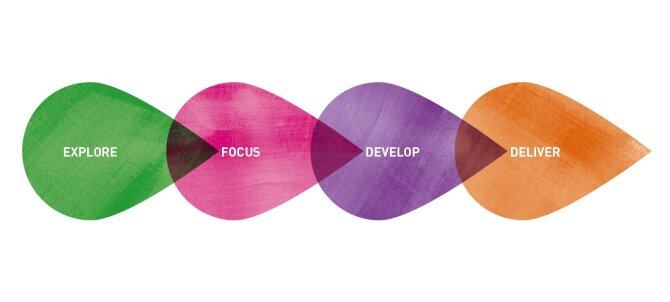Adding Inclusive Design to your design process
Most companies have a design or development process that they use to bring new ideas to market. Inclusive Design can be integrated into these models, adding the value of a people-centred approach without disrupting existing practice.
There are many different ways of modelling a typical design development or innovation process, and each company is likely to have developed their own version to suit their particular purpose or industry. However, each model will generally follow the same basic steps. This section introduces eight Inclusive Design elements and explains how they can be incorporated into the various stages of any process.
The design development model above is used by DOGA as a general example. It has a primary focus on the early phases in the process, named the Ideation Stage in the diagram. This stage is of key importance in innovation projects as many of the decisions made here will impact on the rest of the project. The activities grouped under the Ideation Stage can be iteratively used until a concept is defined and selected for development. It is then passed into the Operative Stage, which is more linear and focuses on bringing the idea to market.
ACTIVITIES
The eight Inclusive Design activities listed here will give you an overview of practical methods and techniques for bringing Inclusive Design thinking into your development process. Each activity consists of tasks that help to bring the user into focus.
In the early stages, these activities include methods for setting up your research, obtaining insights from users and then using these insights as inspiration for ideas. In the later stages, as a project progresses through its development cycles, the activities help to maintain a people-centred perspective during decision-making and evaluation.

It is important that the tasks are adapted to suit your own needs and individual process. It may not be necessary to complete every activity, or even follow the order. They can be used as appropriate. These activities should not be seen as stand-alone tasks but should eventually become an integral part of your own development process.
INCLUSIVE DESIGN ACTIVITIES
- Understand Context
- Design Research
- Discover Needs
- Map Insights
- Translate Briefs
- Scenario Building
- User Feedback
- Resource Building